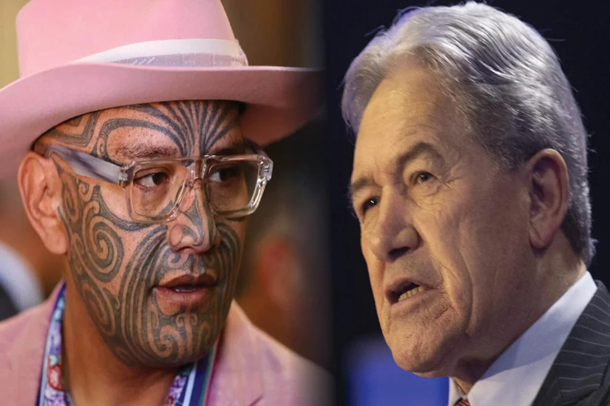Earlier this week the Honourable Winston Peters, in an open parliament debate about the punishment of three politicians of the Māori Party made what is considered a derogatory and racist comment about the Honourable Rawiri Waititi’s moko kanohi (traditional tattoo that covers the face, while a moko kauae is on the chin only of women). Mr Peters in his speech made the statement that Mr Waititi had “scribbles on his face“, in reference to his moko. Mr Peters was forced to apologise, in which he did.
This has seen an online protest in various social media of men, women and groups of people wearing facial moko protesting against the comments made by Mr Peters. There are also several unique photos of Mr Peters with scribble and other colonial images on his face. The common posts include #scribble, #barcode, #wini, #kupapa, and a number of statements directed at Mr Peters about how proud they are of their moko/scribble and a number of derogatory statements.
The power and accessibility of the Internet and World Wide Web has seen traditional Māori protests taken from the street to the web, reaching into the homes and workplaces of everyone, with a ease. This is particularly important as mainstream media often do not report on Māori issues and the Māori media are small and under resourced.
Arguably the first times that we saw Māori protest online was in 2001 to 2002 where Māori lobbied in large numbers for the creation of the .maori.nz domain name, the 2002 Foreshore and Seabed Hikoi where attacks on government web sites were believed to have occurred, multiple attacks on white supremacy web sites causing significant damages, and the international case of Lego appropriating Māori culture with Bionicle’s where Māori were termed cyber terrorists.
While some protests online are harmless, the scribble protest has unintended consequences for wearers of moko that some may not be aware of. It also serves as an international consideration for other Indigenous Peoples.
The primary risks are:
- Cultural appropriation where moko wearers are often exploited by artists and companies for their images. The close up images and the abundance will make it easier for such events to occur.
- Avatars of people currently lack indigenous faces. The large amount of photos in this online activism could be used to create avatars.
- It has been well documented in New Zealand that Facial Recognition Technologies (FRT) are not trained on New Zealand datasets and that facial tattoos create identification issues. The large amount of images online could be used for training of FRT without permission of the people in the photos.
- The most likely issues are with Artificial Intelligence not having enough Māori faces and bodies with moko to train on. Both Māori and non Māori actively seek images of people with moko and scan or copy from social media to input into AI so it can learn to create moko. See image below. Or with Artificial Intelligence using the images as deepfake photos and videos that are used for racism, fake news, pornography, fraud, etc.

I recently wrote a similar article on the Action Figure phase that was recently popular highlighting the risks to Māori and Indigenous Peoples that offers some solutions.
There is not set cultural protocols about photos and moko in the tech age, and it is entirely up to the individual who wears their taonga. It does in my opinion raise again, the need for more discussions about cultural protocols and protection mechanisms in the age of AI.

